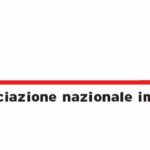
Don’t replace peripheral venous catheters at regular intervals but based on clinical evaluation.
The routine replacement (or at regular intervals) of peripheral venous catheters has a lower cost-benefit than a replacement following clinical criteria. The decision to replace the peripheral venous catheter should be based on the assessment of the patient’s conditions; the vascular access site; the skin integrity and used vein; the duration and type of prescribed therapy; the integrity, patency and stability of the device; the fastening dressing. Replacement strategies of the catheters as clinically indicated reduce costs and inconvenience for patients without increasing the risk of phlebitis. Potential complications such as phlebitis, occlusion and accidental catheter removal are related to other risk factors.
Sources
1. Tuffaha HW, Rickard CM, Webster J, Marsh N, Gordon L, Wallis M, Scuffham PA. Cost-Effectiveness Analysis of Clinically Indicated Versus Routine Replacement of Peripheral Intravenous Catheters. Applied Health Economics and Health Policy, 01/2014.
2. Infusion Nurses Society (INS), Infusion Nursing. Standards of practice, Revised 2011. Journal of Infusion Nursing. 2011; 34: 1-110.
3. Healthcare Infection Control Practices Advisory Committee (HICPAC). Guidelines for the Prevention of Intravascular Catheter-Related Infections. Atlanta, CDC and Prevention, 2011.
4. Rickard C, Webster J, Wallis MC, Marsh N, McGrail M, French V, Foster L, Gallagher P, Gowardman J, McClymont A, Whitby M. Peripheral intravenous catheters can be left in situ until clinically indicated for removal: Randomised controlled trial. Australian Critical Care. 2012; 25(2):125.
5. Wallis MC, McGrail M, Webster J, Marsh N, Gowardman J, Playford EG, Rickard CM. Risk Factors for Peripheral Intravenous Catheter Failure: A Multivariate Analysis of Data from a Randomized Controlled Trial. Infection Control and Hospital Epidemiology, 2014; 35(1): 63-68.
Attention. Please note that these items are provided only for information and are not intended as a substitute for consultation with a clinician. Patients with any specific questions about the items on this list or their individual situation should consult their clinician.


Recent Comments